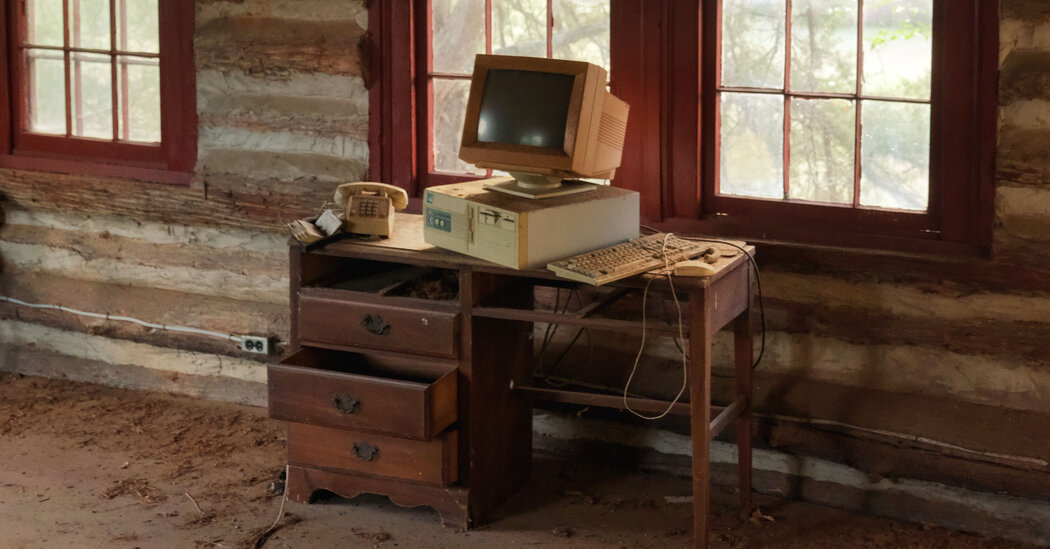When a friend called up Rachel Snyder, sobbing, on the morning of April 29, 2024, she needed a moment to process what was going on. Check your email, the friend said. The college was closing down.
Ms. Snyder knew that her alma mater, Wells College, was struggling. Enrollment at the 156-year-old liberal arts school had slipped in recent years, despite a proud history and picturesque location overlooking the southern tip of Cayuga Lake in upstate New York. But it had just held a fund-raiser the week before and admitted a new class of freshmen for the fall. She had personally written some of them notes of welcome — a tradition among Wells alumni.
Over the following weeks and months, the truth emerged. Faced with seemingly unsolvable financial problems, the Wells board of trustees abruptly shuttered the school. Today, Wells stands empty, an academic ghost ship with dust gathering on shelves and barricades barring locals who used to mingle on the lawns.
The demise of Wells College has become a familiar story. In the 19th century, pioneers and religious seekers built a constellation of private colleges across the Northeast, South and Midwest. Now these schools are steadily blinking out. The Council of Independent Colleges, a national trade association, had 658 members at the beginning of the fall 2023 semester. Over the next two years, it lost 18 colleges to closure and three to merger, adding to the dozens that had already closed over the previous decade.
The trickle of shutdowns could soon become a flood: The Trump administration’s crackdown on student visas and harsh anti-immigrant talk will keep away many foreign students, who often pay full tuition. A wave of closings would be devastating.
In parts of the country that have already been rocked by globalization, the nearby college is one of the few places left where young people can climb the ladder of opportunity and older adults can find a good job. Locals attend their concerts, cheer on their sports teams and own businesses that cater to students. These schools secure the fraying social fabric that holds many towns together.
In Lincoln, a small city in central Illinois, the college theater that used to host families for performances sits empty. Lincoln has lost both of its institutions of higher learning in two years: Lincoln College, a predominantly Black school that enrolled many students from Chicago and closed in 2022, and Lincoln Christian University, a small Bible college that shut down last year. Tracy Welch, the mayor of Lincoln, said the closings were “a huge loss for our community.”
Most private colleges are not havens for the prep school elite, and they tend to enroll many moderate-income and first-generation students. Students could attend public universities and community colleges instead, but those programs rarely have the same focus on civic responsibility, the humanities and student discussion as liberal arts schools, which still follow a model of teaching derived from the ancient Greeks. In a world where technology is constantly upending the job market in ways impossible to foresee, the abilities to think, adapt and communicate are the most valuable skills of all.
Valerie Burnes has seen the difference up close. She was an undergraduate and a professor at Judson College, a private Baptist school for women that shut down in 2021. Judson was in Marion, Ala., a redbrick municipality of about 3,000 people that once had so many college students that a sign on the edge of town still welcomes visitors to “The College City.” Today, Ms. Burnes teaches modern U.S. history an hour away, at the University of West Alabama.
When she was an undergrad, Judson was a place where Ms. Burnes felt comfortable speaking out and raising her hand in class. It was a close community. Her English teacher became her priest at the local Episcopal church. On alumnae day, she said, “We have people from the 1950s all the way to 2020. And we all know the same songs.”
The college created a certain kind of person. “There should have been a T-shirt for husbands that said, ‘Help, I married a Judson girl!’ Because we’d be the people who, if we saw a dog on the side of the road, we wouldn’t hope someone else would help the dog. We’d pull over ourselves, in the rain.” People all over the state would tell her: “Oh, my grandmother went to Judson. The organist in my church went to Judson. My Sunday school teacher went to Judson.”
The college closed abruptly. “It felt like a death,” Ms. Burnes said. Not just for a community, but for a vanishing kind of education. “The beauty of liberal arts colleges was, they taught you how to think, how to function in a civilized world, not just training for a job,” she said. “I see some students in my classes and I think, oh, I wish you would have gone to Judson. You would have thrived there.”
Many liberal arts schools closed because they couldn’t recover from the pandemic. Others couldn’t keep up with the arms race for expensive amenities that students have come to expect. And all were early victims of a problem that is about to wash over the entirety of American higher education: not enough applicants.
The year before the 2008 financial crisis, there were 4.3 million babies born in the United States, the highest number in history. Last year, there were only 3.6 million. The birthrate decline that began in 2008 lit an 18-year fuse on a college freshman slump that starts next year. Many highly selective schools are getting more applicants by the year, meaning that the enrollment crisis will continue to burn through mostly small colleges for decades to come.
College leaders in crisis face a dilemma: They need to reach out for help before the money runs out, but if they let people know their schools might go under, students won’t enroll. So they tend to put on a brave face until it’s too late. Wells College collapsed on top of some students who had just transferred there from nearby Cazenovia College, which shuttered the previous year.
Private colleges are more than just historical buildings. Their real value is in their deep roots in the community, academic traditions that span generations and lifetimes of expertise. Those assets ought not be squandered because of a few bad fiscal years.
Congress could create a national college preservation act — modeled after the National Historic Preservation Act — that gives financially stressed schools the time and money they need to find firmer ground. Some might collaborate with their alumni supporters to develop a new fund-raising and business model. Others could merge with a partner university. Bloomfield College in New Jersey, which was founded the same year as Wells College, foundered during the pandemic, and successfully merged with the nearby public Montclair State University in 2023.
Without this kind of intervention, a uniquely American institution — one so beloved that it draws international students and sustains civic life — will disintegrate until nothing is left to reclaim.
Kevin Carey is the vice president for education and work at New America, a nonpartisan think tank in Washington.
The Times is committed to publishing a diversity of letters to the editor. We’d like to hear what you think about this or any of our articles. Here are some tips. And here’s our email: [email protected].
Follow the New York Times Opinion section on Facebook, Instagram, TikTok, Bluesky, WhatsApp and Threads.
The post What’s Lost When Liberal Arts Schools Close appeared first on New York Times.




